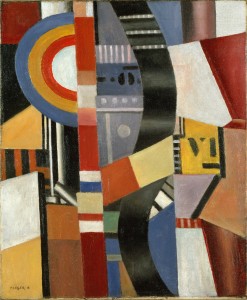New Times, New Pleasures,
And The Responsibility Of Art
![Moon Kyungwon and Jeon Joonho El Fin del Mundo (The End of the World) 2012 [05]](http://www.thedoublenegative.co.uk/blog/wp-content/uploads/2018/11/Moon-Kyungwon-and-Jeon-Joonho-El-Fin-del-Mundo-The-End-of-the-World-2012-05.jpg)
A pair of new exhibitions opening at Tate Liverpool next week feature artists keenly aware of their times, and their responsibilities to them. Mike Pinnington looks at the artists’ approaches to reflecting the “now”…
It’s not news, nor coincidence, that over the last few years there has been a spike in the popularity of dystopian fiction. As present-day society seems to lurch ever closer to fulfilling certain well-worn criteria of the genre – whether that be in the form of climate change, the isolationist intent of despotic leaders, or the perceived curtailing of press freedoms – the early stages of this century are unsettling indeed. Which, in a roundabout way, brings us to two new exhibitions opening at Tate Liverpool next week, featuring French modernist Fernand Léger, and the South Korean contemporary artists Moon Kyungwon and Jeon Joonho. It’s often said that great art responds to and reflects the times in which it is produced, and this pair of shows are nothing if not relevant.
In our present reality gloomily outlined above, it’s striking to observe the optimism with which modernist mover and shaker Fernand Léger (1881–1955) imbued his work. In thrall to the machine age to which he was exposed on moving to turn of the century Paris, Léger’s paintings – full of the hum of machinery, geometric forms and the city itself – spoke to the wonders of modern-day accoutrements. He also literally spoke of these things, eulogising that: “Beauty is not codified or classified, beauty is all around, in the order of a set of saucepans on the white wall of a kitchen as well as in a museum.”
Inter-disciplinary and an enthusiastic collaborator, he was what we’d call these days an early adopter, eagerly embracing and experimenting with the new and burgeoning forms of creative expression available. An aficionado of the cinema, in 1924 with director Dudley Murphy (and Man Ray on cinematography duties), he made Ballet Mecanique, an avant-garde film full of the movement and energy of the times. He recognised in the moving image a popular mass medium that could be enjoyed by all sections of society. This must have resonated with his concern that modern art must not be for the bourgeois elite only – for Léger, who believed passionately that art could enhance our experience of life, it should be accessible to all.

Art and how it might relate meaningfully to our lives is a thread that runs right through the work of Moon Kyungwon and Jeon Joonho. Like Léger, they believe that art should be shared with everyone. Finding themselves regularly appearing in various group shows together from 2007, the pair began to talk and think critically about their work, the exhibitions they were in and, crucially, about what the role of art and the artist is today. This gave rise, in 2009, to their project News From Nowhere. Inspired by William Morris’ 1890 satire of the same name, the artists use science fiction as a vehicle to reflect on the direction and intent of contemporary art practices. “Sci-fi is always the fable of the present” they have said. “By employing a way to look at the future instead of the present, we wanted to address current issues, especially in relation to what art is and what art could be.”
In an interview published in Tate etc. earlier this year, asked about Léger and art’s place in the world, Moon and Jeon reflected that: “Time has passed since Léger, and we are now living in a high-technology society that he has dreamt of. Yet, we feel that society more closely resembles dystopia rather than the utopia he had imagined. Our News From Nowhere project seeks to explore what art can do in this era of turbulence.” In the Tate Liverpool exhibition, this is borne out by two film works; 2012′s El Fin del Mundo (The End of the World), and Anomaly Strolls, a brand new commission that ponders late capitalist society’s ennui.
Presenting a catastrophic end, and a possible new beginning, El Fin del Mundo is displayed on two screens. On one we see a world of impending ecological disaster. Despite this, a seemingly unmoved protagonist continues to go about the business of being an artist, amid detritus from the streets – materials gathered for his work. On the other, future scenario, a female protagonist is kept busy in this new world by classifying and documenting artefacts from the past. Coming across materials gathered by the man she is subject to a kind of spiritual aesthetic awakening. The message seems to be that even in this anodyne time in the future, art – even if we might not know that’s what it is – will continue to affect us. The related Anomaly Strolls deals with similar concerns, and perhaps features our male lead from El Fin del Mundo. Shot in part in Liverpool, the film hints at the loneliness of city life as lived now. Important – and sad – that this contains essential truths, and how different to the lived experience as represented by Léger.
Mike Pinnington
See Fernand Léger: New Times, New Pleasures (£10.50-8.50) and Moon Kyungwon and Jeon Joonho’s News From Nowhere (FREE) at Tate Liverpool from 23 November 2018 until 17 March 2019
Listen to The Double Negative’s Laura Robertson discuss Fernand Léger on BBC Radio 4′s Front Row
Images from top: still from Moon Kyungwon and Jeon Joonho’s El Fin del Mundo (The End of the World) 2012 2 channel HD video installation , courtesy of the artists and Gallery Hyundai; Fernand Léger, The Disc (Le Disque) 1918, Museo Nacional Thyssen-Bornemisza, Madrid © ADAGP, Paris and DACS, London 2018. Provenance: Museo Nacional Thyssen-Bornemisza, Madrid





